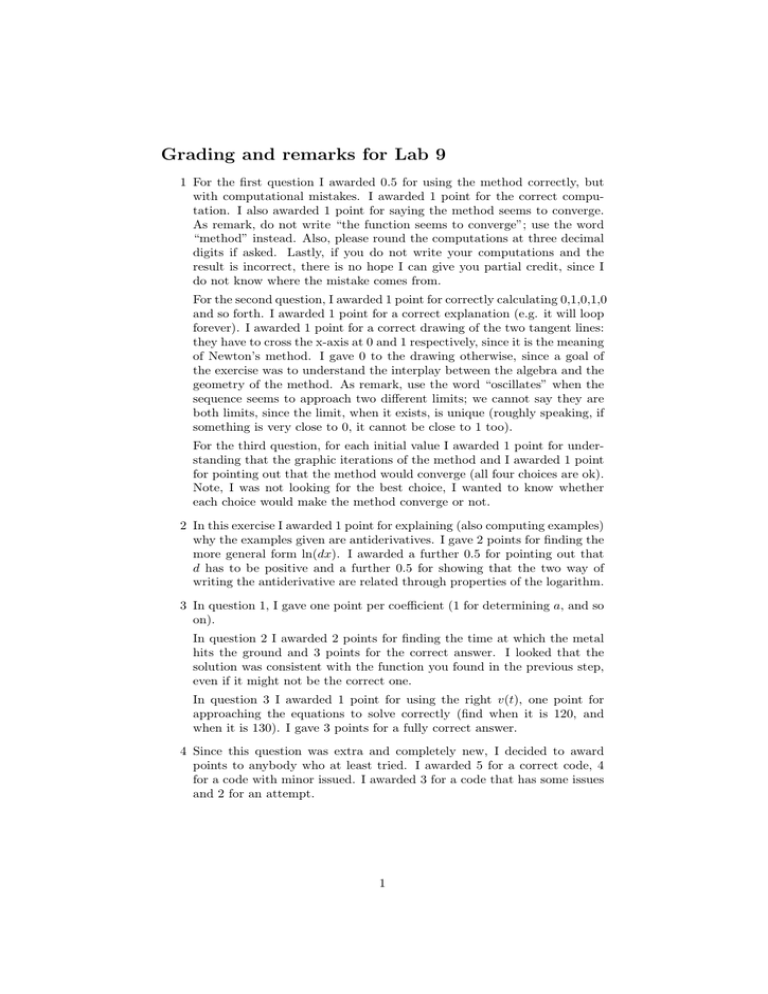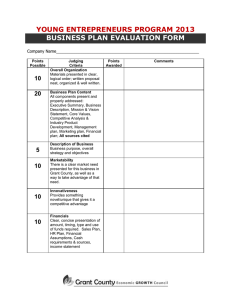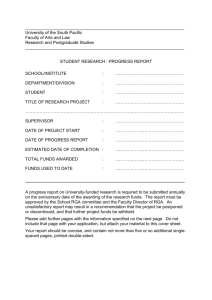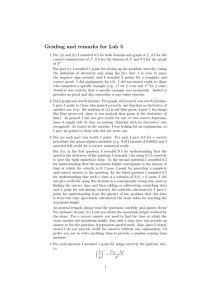Grading and remarks for Lab 9
advertisement

Grading and remarks for Lab 9 1 For the first question I awarded 0.5 for using the method correctly, but with computational mistakes. I awarded 1 point for the correct computation. I also awarded 1 point for saying the method seems to converge. As remark, do not write “the function seems to converge”; use the word “method” instead. Also, please round the computations at three decimal digits if asked. Lastly, if you do not write your computations and the result is incorrect, there is no hope I can give you partial credit, since I do not know where the mistake comes from. For the second question, I awarded 1 point for correctly calculating 0,1,0,1,0 and so forth. I awarded 1 point for a correct explanation (e.g. it will loop forever). I awarded 1 point for a correct drawing of the two tangent lines: they have to cross the x-axis at 0 and 1 respectively, since it is the meaning of Newton’s method. I gave 0 to the drawing otherwise, since a goal of the exercise was to understand the interplay between the algebra and the geometry of the method. As remark, use the word “oscillates” when the sequence seems to approach two different limits; we cannot say they are both limits, since the limit, when it exists, is unique (roughly speaking, if something is very close to 0, it cannot be close to 1 too). For the third question, for each initial value I awarded 1 point for understanding that the graphic iterations of the method and I awarded 1 point for pointing out that the method would converge (all four choices are ok). Note, I was not looking for the best choice, I wanted to know whether each choice would make the method converge or not. 2 In this exercise I awarded 1 point for explaining (also computing examples) why the examples given are antiderivatives. I gave 2 points for finding the more general form ln(dx). I awarded a further 0.5 for pointing out that d has to be positive and a further 0.5 for showing that the two way of writing the antiderivative are related through properties of the logarithm. 3 In question 1, I gave one point per coefficient (1 for determining a, and so on). In question 2 I awarded 2 points for finding the time at which the metal hits the ground and 3 points for the correct answer. I looked that the solution was consistent with the function you found in the previous step, even if it might not be the correct one. In question 3 I awarded 1 point for using the right v(t), one point for approaching the equations to solve correctly (find when it is 120, and when it is 130). I gave 3 points for a fully correct answer. 4 Since this question was extra and completely new, I decided to award points to anybody who at least tried. I awarded 5 for a correct code, 4 for a code with minor issued. I awarded 3 for a code that has some issues and 2 for an attempt. 1




